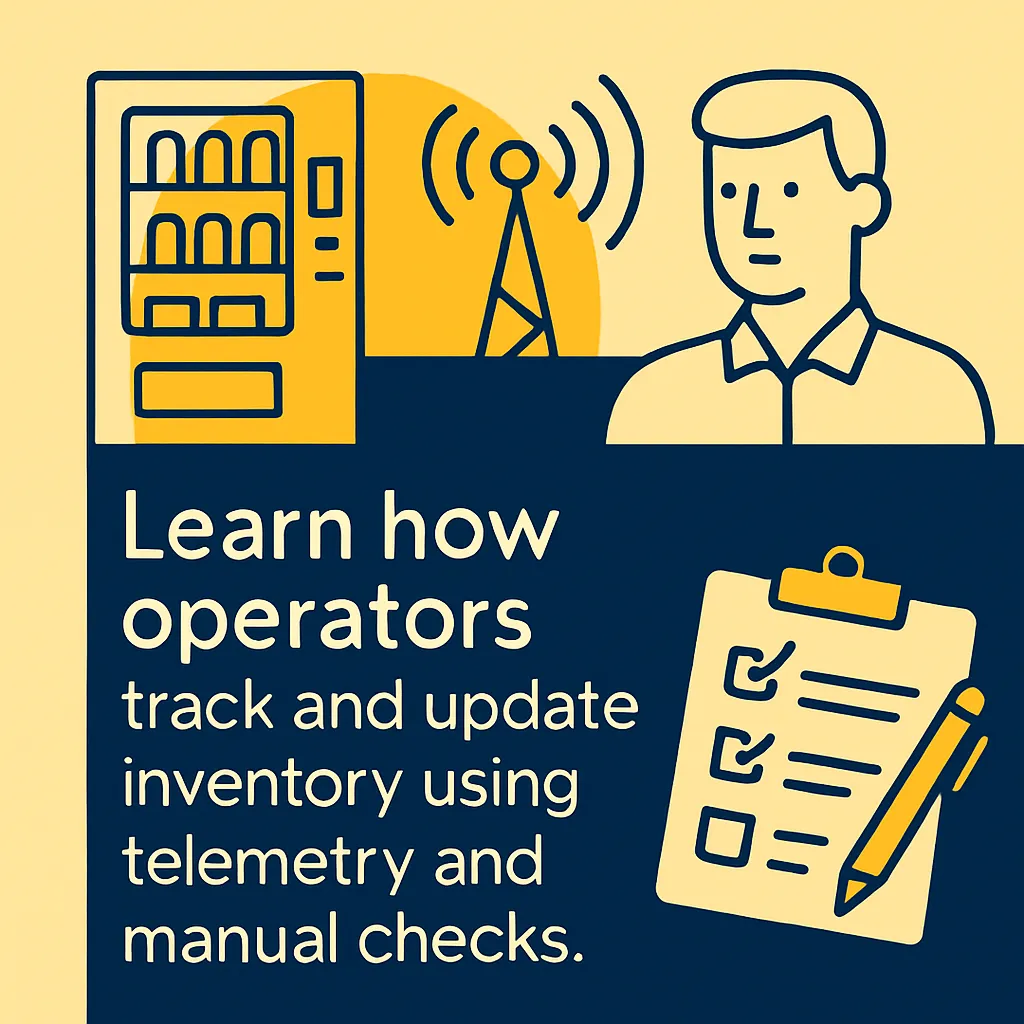How Do Vending Machine Inventories Get Updated?
Learn how operators track and update inventory using telemetry and manual checks.
Back to Vending FAQs ResourcesLearn how operators track and update inventory using telemetry and manual checks.
Back to Vending FAQs ResourcesEfficient inventory management is crucial for vending machine success, ensuring customer satisfaction and maximizing sales. Operators utilize a combination of traditional and cutting-edge methods to keep machines fully stocked with popular items.
![]() Telemetry provides real-time sales and stock data
Telemetry provides real-time sales and stock data
![]() Manual checks confirm physical inventory and machine status
Manual checks confirm physical inventory and machine status
![]() Optimized restocking routes based on accurate data reduce costs
Optimized restocking routes based on accurate data reduce costs

Understanding "How Do Vending Machine Inventories Get Updated?" reveals a fascinating blend of traditional practices and modern technological advancements. For decades, vending machine operators relied almost entirely on manual processes. This involved physically visiting each machine, checking stock levels by hand, and noting down what needed replenishment. This method, while still in use for some smaller operations or older machines, is time-consuming and prone to human error, often leading to either overstocking or, more commonly, machines running out of popular items.
The advent of digital technology has revolutionized vending inventory management. Modern vending machines are increasingly equipped with advanced telemetry systems. These systems incorporate sensors that track every sale and every product dispensed. This data is then transmitted wirelessly, often via cellular networks, to a central management system or software application. Operators can access real-time information about what's sold, what's remaining, and identify best-selling products. This real-time visibility allows for much more efficient route planning, enabling operators to visit machines only when necessary and to arrive with the exact products needed. This not only saves time and fuel but also drastically reduces instances of machines running empty.
Beyond telemetry, newer innovations like AI vending coolers and micro markets take inventory management even further. These systems often feature computer vision and advanced sensors that can identify when products are removed, even for browsing, further refining stock tracking accuracy. Such high-tech solutions provide a granular level of detail, helping operators minimize shrinkage, optimize pricing strategies, and fine-tune product assortment to match consumer demand specific to each location. For businesses managing multiple locations, integrating such advanced systems is key to scaling efficiently and maintaining high customer satisfaction.
The updated inventory data feeds directly into planning for restocking. Operators can use this information to determine minimum stock levels, reorder points, and even forecast future demand. This predictive capability helps prevent stockouts of high-demand items while avoiding over-purchasing slow-moving inventory. Moreover, this data can inform decisions about which products to offer at specific locations. For instance, an office environment might require different selections than a gym, and inventory data helps tailor these offerings. Effective inventory updates ensure that businesses consistently provide fresh, relevant products, enhancing the overall user experience.
It's the process of tracking products inside vending machines to ensure they are adequately stocked and popular items are always available.
For traditional machines, inventory is often updated manually during scheduled visits by service technicians who physically check stock levels.
Telemetry systems use sensors and internet connectivity to provide real-time data on stock levels, sales, and machine status directly to operators.
While increasingly common, not all modern machines are equipped with full telemetry. Many can be retrofitted or are sold with it as an optional feature.
It allows operators to optimize restocking routes, prioritize machines low on popular items, reduce fuel costs, and minimize out-of-stock situations.
Telemetry tracks actual sales per item, current stock levels, machine temperature, payment system status, and error alerts.
Some advanced systems can generate automatic reorder suggestions or even place orders with suppliers based on sales data and pre-set minimum stock levels.
Manual updates occur during service visits, which can range from weekly to monthly. Telemetry allows for continuous, real-time updates.
Planogramming is the process of mapping out where each product is placed within the vending machine, aiding in efficient restocking and inventory visual checks.
By ensuring popular products are always available and machines are rarely empty, efficient inventory management significantly boosts customer satisfaction.